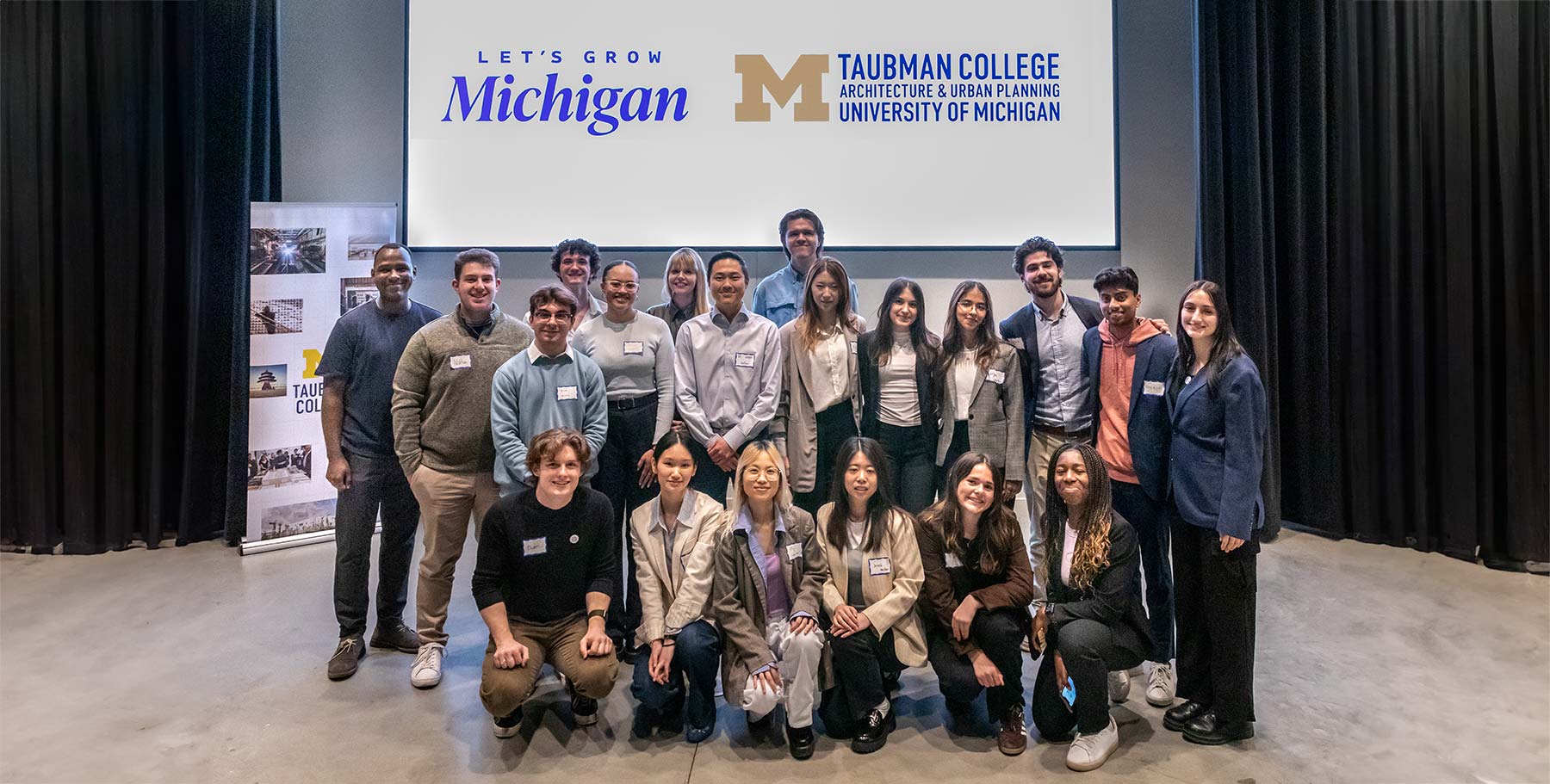A paper by Taubman College faculty Lars Junghans, Kathy Velikov, and Geoffrey Thün, with Daniel Tish, M.Arch ’15, and Dustin Brugmann, M.Arch ’15, has been honored by the Association of Collegiate Schools of Architecture (ACSA).
“Experiments Toward Hyper-Local Reverse Heat Flow Assemblies” won the 2019–2020 TAD Research Contribution Award, which recognizes the best article from the Technology | Architecture + Design Journal (TAD). It was published in TAD Volume 2, Issue 2. This is the inaugural year of the award.
The paper discusses the team’s research project Latitudo Borealis, which develops an innovative cold-climate wall assembly that combines new passive opaque building envelope technologies to absorb, store, and transfer solar energy into a building during winter, with exterior shading to mitigate overheating during summer. The research encompasses three domains of architectural research: the physical testing and optimization of high-performance envelope assemblies, the use of computational evolutionary algorithms in the design of highly tuned climate-informed shading configurations, and new tools and processes for precise robotic heat bending of wood. It is demonstrated that the assemblies are capable of successfully absorbing and redirecting heat into the building interior in winter to improve building performance. The application of the experimental envelope assembly is further explored through the design of an unbuilt test case pavilion.
Junghans is an associate professor of architecture. His research is focused on the development and optimization of high-performance buildings with a comprehensive view of all aspects of the building’s thermal behavior, including passive and active strategies. His research aims to find holistic optimal solutions for the challenges of buildings in different climate zones.
Velikov and Thün, who also are associate professors of architecture, are the founding partners of the research-based practice RVTR, which serves as a platform for exploration and experimentation in the intertwinements between architecture, the environment, technology, and sociopolitics. Their work ranges from material prototypes that explore new possibilities for architectural skins that mediate matter, energy, information, space, and atmosphere between bodies and environments, to the investigation of urban infrastructures and territorial practices, working through the techniques of mapping and analysis, speculative design propositions, installations, and writing.
Technology | Architecture + Design is a peer-reviewed international journal dedicated to the advancement of scholarship in the field of building technology, with a focus on the impact, translation and integration of technology in architecture and design. TAD solicits, captures, and shares new knowledge in how we think, make and use technology within the building arts. Published articles feature primary research in emerging materials, construction techniques, design integration, structures, building systems, energy, environmental design, information technology, digital fabrication, sustainability and resiliency, project delivery, the history and theory of technology, and building technology education. Aimed at researchers, educators, and practitioners, the journal advances and transforms the current discourse on building and environmental technologies with the goal of expanding, reimagining and challenging its role for architecture and design.





